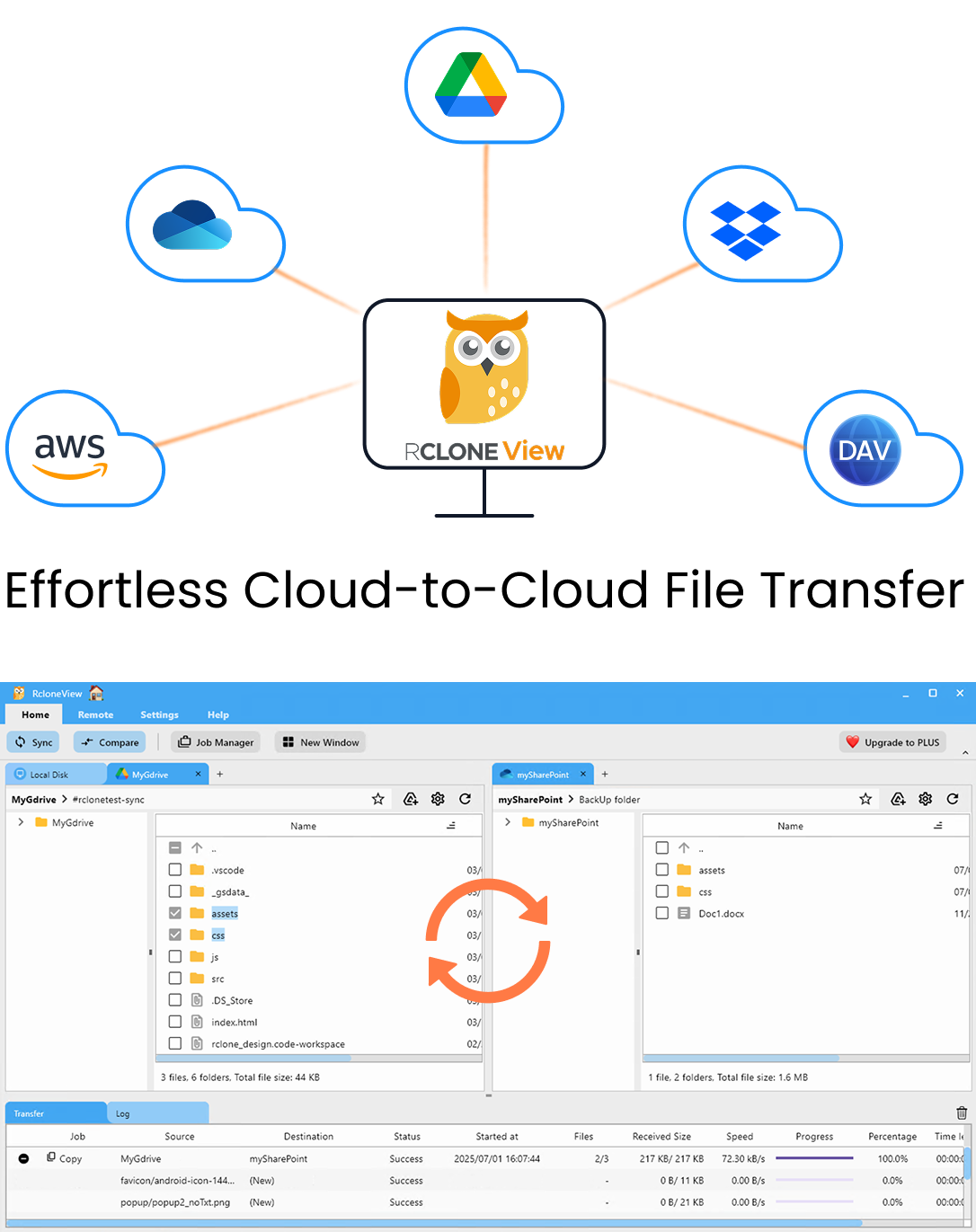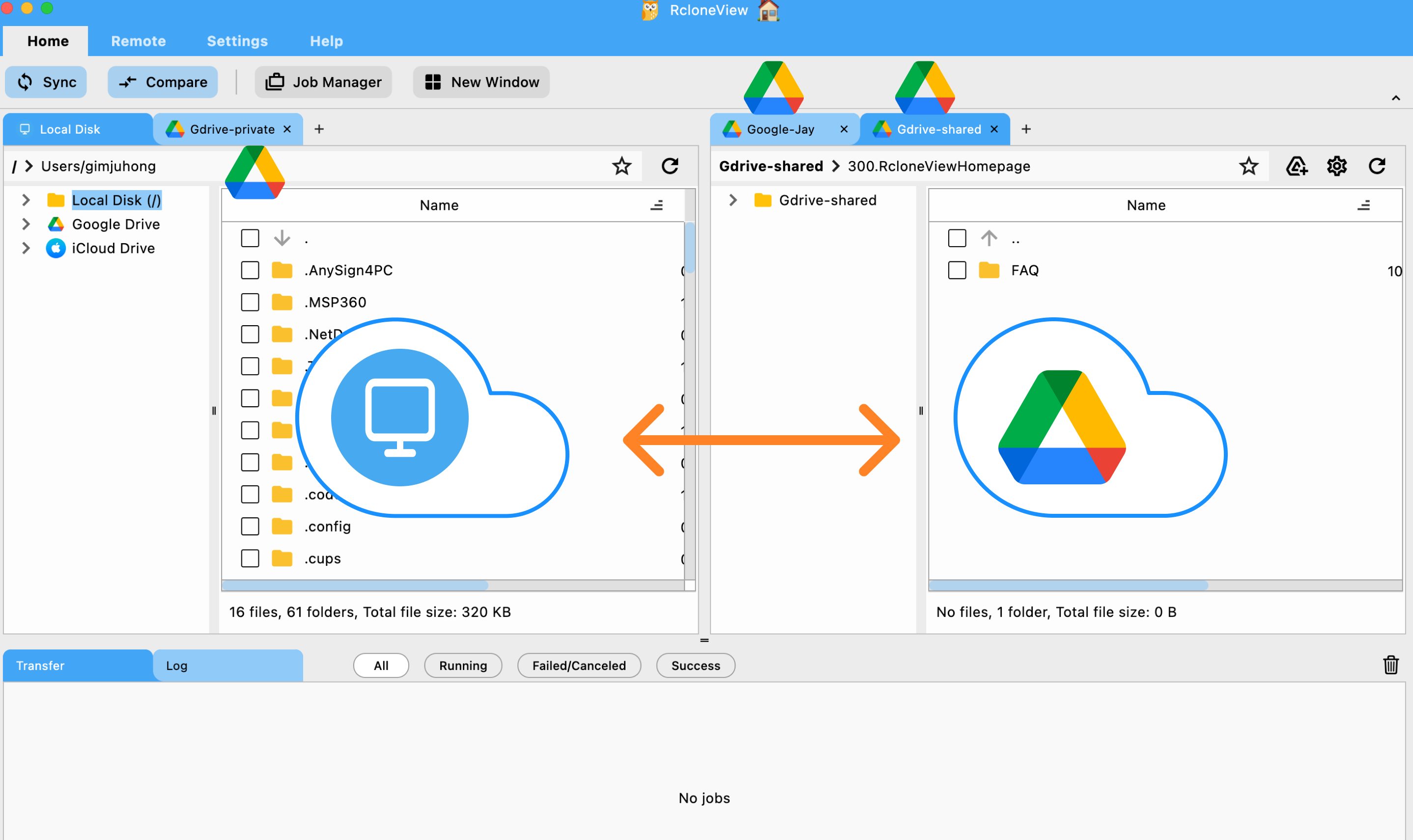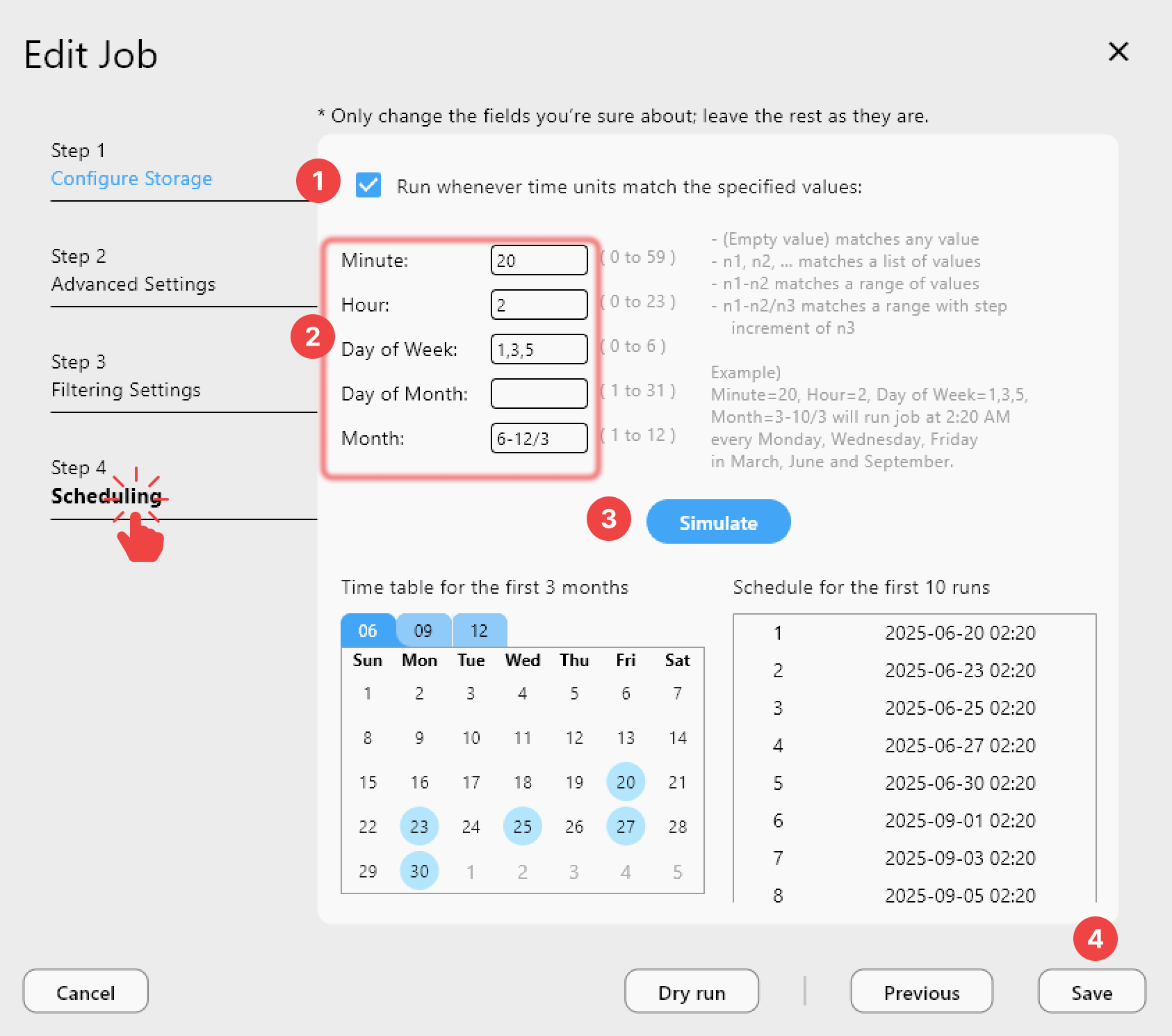Offline First Sync: Keep Your Cloud Data on External Drives with RcloneView
Bring your cloud with you. Use RcloneView to mirror Google Drive, Dropbox, OneDrive, or S3 onto an external HDD/SSD that stays updated—ready for planes, trains, or spotty hotel Wi-Fi.
Travel, field shoots, or simply wanting a physical backup often collide with cloud-only workflows. Official sync apps throttle large libraries or demand selective sync. If you need the entire folder tree offline—and a plug-in drive as part of your backup strategy—RcloneView turns rclone’s sync power into a friendly GUI. Connect a remote, pick your external path, and schedule automatic refreshes so your drive is always ready, even if your account gets locked or you lose connectivity.
Offline-first perks
- Open docs, photos, and code with zero internet.
- Insulate yourself from account lockouts or accidental deletions.
- Restore data quickly if cloud copies become corrupted.
- Carry terabytes of media for editing on the go.

Manage & Sync All Clouds in One Place
RcloneView is a cross-platform GUI for rclone. Compare folders, transfer or sync files, and automate multi-cloud workflows with a clean, visual interface.
- One-click jobs: Copy · Sync · Compare
- Schedulers & history for reliable automation
- Works with Google Drive, OneDrive, Dropbox, S3, WebDAV, SFTP and more
Free core features. Plus automations available.
Offline First vs. Cloud-Only
| Mode | Description | Pros | Cons |
|---|---|---|---|
| Cloud only | Everything stays online | Saves disk space | Internet required; no physical backup |
| Selective sync | Download a subset locally | Lighter storage footprint | Still partial; easy to miss folders |
| Offline first (RcloneView) | Mirror full folders to external drive | Full offline access + extra backup | Needs sync/automation setup |
RcloneView’s “offline first” flow means your external drive is a living copy of the cloud.
Why RcloneView for External Drive Sync?
- Works with every rclone backend (Drive, Dropbox, OneDrive, S3, Wasabi, R2, more).
- Handles large datasets (hundreds of GBs to multiple TB) with resumable transfers.
- Built-in filters, thread control, and bandwidth limits keep jobs safe on slow links.
- Scheduler automates daily updates—no manual downloads required.
- GUI-first workflow means no scripts, cron, or command-line rclone.
Helpful guides
- Browse/manage sources: https://rcloneview.com/support/howto/rcloneview-basic/browse-and-manage-remote-storage
- Instant sync basics: https://rcloneview.com/support/howto/rcloneview-basic/synchronize-remote-storages
- Save and schedule jobs: https://rcloneview.com/support/howto/rcloneview-basic/create-sync-jobs, https://rcloneview.com/support/howto/rcloneview-advanced/job-scheduling-and-execution

Step-by-Step — Sync Cloud Data to an External Drive
Step 1 — Prepare the drive
- Plug in the USB HDD/SSD.
- Create/confirm the destination folder (e.g.,
E:\\CloudArchive\\on Windows or/Volumes/TravelSSD/Cloud/on macOS). - Ensure enough free space for the cloud content you plan to mirror.
Step 2 — Connect your cloud remote
- Click
+ New Remote, choose Google Drive/Dropbox/OneDrive for OAuth sign-in, or enter keys for S3/Wasabi/R2. - Verify the remote appears in Explorer. \nSee: /support/howto/remote-storage-connection-settings/add-oath-online-login and /support/howto/remote-storage-connection-settings/s3
Step 3 — Build a sync job
- Open Sync or Job Manager → Add Job.
- Source: select the cloud path (e.g.,
gdrive:/Projects/). - Destination: pick the external folder (e.g.,
E:/ProjectsOffline/). - Choose the operation (Copy, Sync, or Move). For most users, Sync mirrors the cloud; Copy keeps existing external files intact.

Step 4 — Fine-tune options
- Filters: skip
node_modules/,*.tmp, or raw footage you don’t need offline. - Versioned backups: copy into a date-stamped folder if you want history.
- Performance: adjust threads/bandwidth to match your link speed.
Step 5 — Run once or schedule
- Run an initial sync to populate the drive. Use Dry run to preview changes.
- Enable scheduling (daily at 3 AM, after-work hours, etc.) so the drive stays fresh whenever the PC and drive are connected.

Step 6 — Monitor and unplug
- Watch the transfer panel for progress; check Job History for success logs.
- Safely eject the drive when done; plug it back in later and let the scheduled job catch up automatically.
Advanced Offline Scenarios
- Business trips: Mirror Google Drive to a portable SSD, take it on the road, edit offline, and sync changes back when online (using Copy/Sync in reverse).
- Creators on location: Pull cloud footage to NVMe SSDs for fast editing; push final renders back to the cloud.
- NAS alternative: Pair RcloneView with an external RAID enclosure to build a “portable NAS” that mirrors S3 or Wasabi without maintaining a full NAS.
Troubleshooting Quick Fixes
| Issue | Solution |
|---|---|
| Slow throughput | Increase transfer threads, disable bandwidth limits, or plug into USB 3.x ports |
| Duplicate warnings | Enable “Skip identical files” (Sync) or use Compare to inspect before copying |
| Drive letter changed | Re-point the job to the new path, or set a fixed drive letter in the OS |
| Missed schedule when PC sleeps | Enable “Launch at login” and re-run jobs manually after waking |
Offline Access, Zero Guesswork
An external drive copy means you can disconnect from the internet without sacrificing your files—and you gain another backup layer in the process. RcloneView streamlines the entire flow: connect a remote, pick your drive, choose Sync or Copy, and let the scheduler keep everything aligned.
Your cloud, your drive—available anywhere, even without internet.

Manage & Sync All Clouds in One Place
RcloneView is a cross-platform GUI for rclone. Compare folders, transfer or sync files, and automate multi-cloud workflows with a clean, visual interface.
- One-click jobs: Copy · Sync · Compare
- Schedulers & history for reliable automation
- Works with Google Drive, OneDrive, Dropbox, S3, WebDAV, SFTP and more
Free core features. Plus automations available.